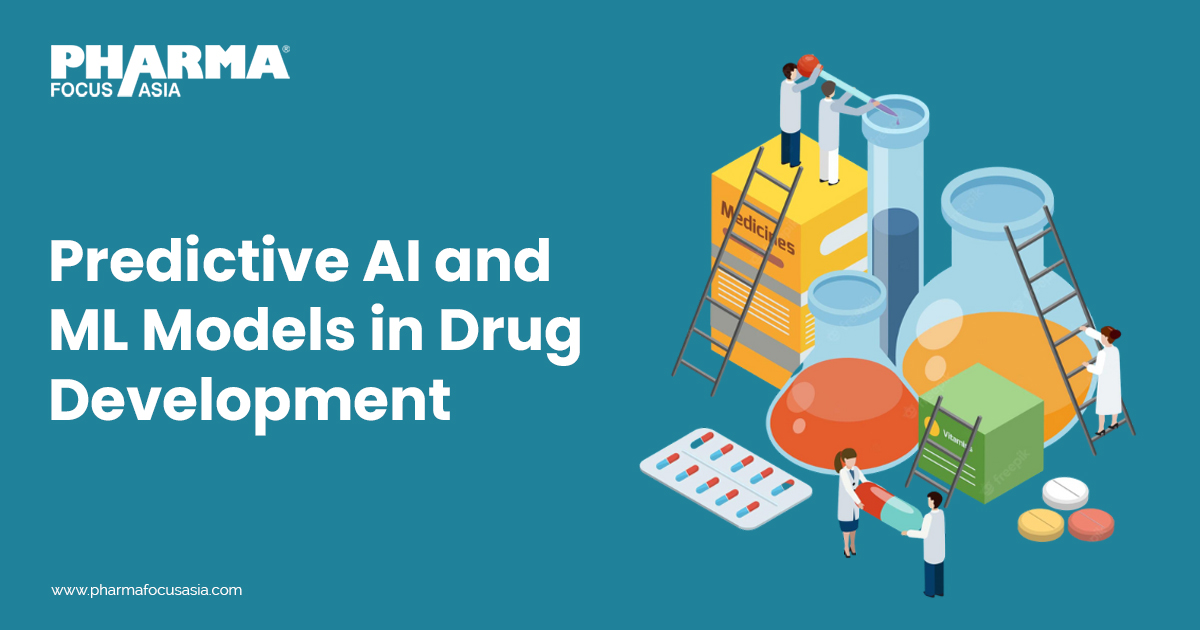Predictive AI model for drug development

Strong 8k brings an ultra-HD IPTV experience to your living room and your pocket.
Incorporating AI predictive models into drug development demands thoughtful consideration. Challenges encompass navigating complex biology and acquiring ample human data. Computational methods, GAN models, and transfer learning address knowledge gaps. The use of XAI enhances decision transparency. Addressing challenges is pivotal for its adoption in predicting drug efficacy and safety.
The integration of artificial intelligence (AI) predictive models in drug discovery and development demands a thoughtful examination. AI models, particularly large Language Models, have undoubtedly proven their effectiveness in certain tasks. However, expecting the same levels of accuracy and output in drug discovery and development field is unrealistic. AI application in drug development requires careful consideration and a comprehensive understanding to avoid futile efforts. The underlying reason lies is the fact that LLM models were trained using extensive human-generated data, a luxury not easily replaceable in the complex biology field of drug development. To harness the power of AI in this sector, a substantial amount of real and intricate biological data must be generated.
Challenges
In this context, the initial step involves comprehensively identifying all factors influencing the outcome related to drug development. Even if we may not understand the either positive or negative influences or their direct or indirect effects on outcome, recognising these factors is crucial. Secondly, animal model generated data can not be useful in developing AI models and predicting the drug efficacy in humans. AI models developed using animal data would generate outcomes that will have the same level of attrition rate in drug success Therefore, it is essential to gather a sufficient amount of human data to develop accurate AI models . Third, the development of an explainable AI (XAI) model is necessary. This XAI model should provide clarity on how and why the AI model reaches its decisions. By doing so, we can analyse established features and their correlation with the XAI decision, gaining insights into the intricate nature of biological processes.
Solutions
Currently, tackling these challenges is important before applying AI. This is complicated by limited understanding of complex biology and limited resources. However, by employing computational methods and leveraging AI, we can address a significant portion of these issues with the right approach. The primary challenge involves comprehending all factors and relationships influencing outcomes in drug development. In these conditions, fully trained AI models using animal data directly cant be used for humans, but these models can be applied to generate the data of common biology concepts and relationships. After transfer learning is applied to develop generative AI models. Considering the complexities of biology, from DNA and RNA sequences to amino acid structures and the impact of external and internal factors on protein structures, computational methods such as sequence analysis models and generative adversarial network (GAN) models prove valuable. These models help fill gaps in our understanding. Once we understand that, it is possible to generate the extra data using generative AI models. Finally, by using transfer learning and XAI models, more reliable AI models can be developed.
Applications of AI
Effective decision-making in the implementation of AI involves the thoughtful selection of appropriate AI models at various stages of drug discovery and development. This encompasses the prediction of key drug characteristics. The integration of AI and data science has uncovered valuable applications in the execution of clinical trials, with numerous industries seamlessly incorporating these cutting-edge technologies.
Hospitals that embrace electronic health records (EHRs) contribute significantly to the pool of high-quality healthcare data. Such data not only supports the swift adoption of AI in clinical trials but also plays a pivotal role in advancing medical research. Notably, advancements in speech-to-text technology and other language models have empowered healthcare professionals by saving time in managing electronic health records. The transformation of doctor-patient conversations into electronic health records not only streamlines the process but also alleviates the stress burden on healthcare workers. This EHRs data proves instrumental in various aspects, including patient cohort selection, expediting subject recruitment, facilitating the coordination of multi-center trials, and predicting early outcomes. Despite these advancements, challenges persist in other phases of drug development, enhancing drug efficacy, optimising drug pharmacokinetics, and predicting offtarget side effects.
Learn more: https://www.pharmafocusasia.com/information-technology/predictive-ai-model-for-drug-development
Note: IndiBlogHub features both user-submitted and editorial content. We do not verify third-party contributions. Read our Disclaimer and Privacy Policyfor details.


